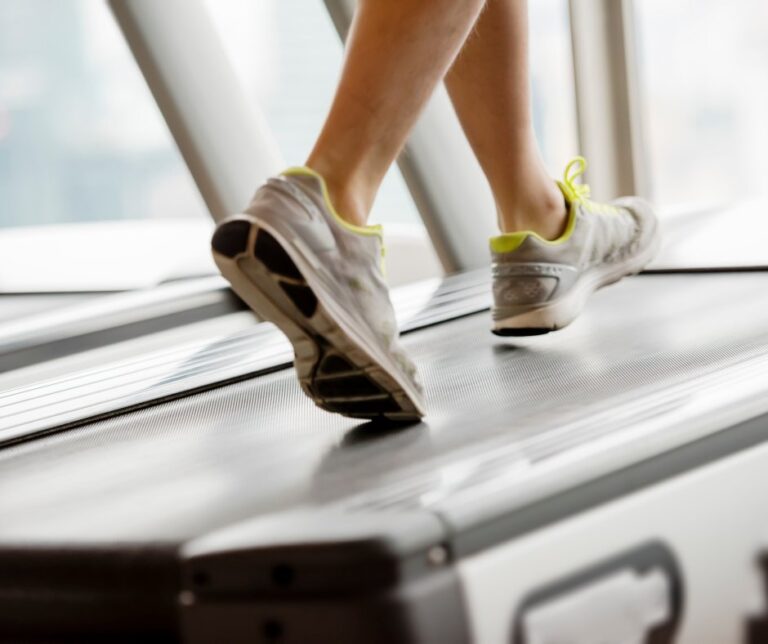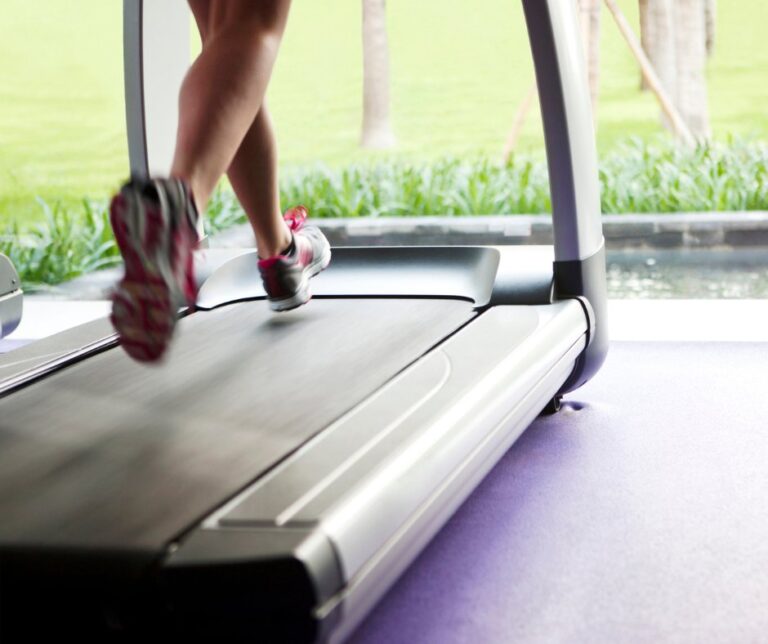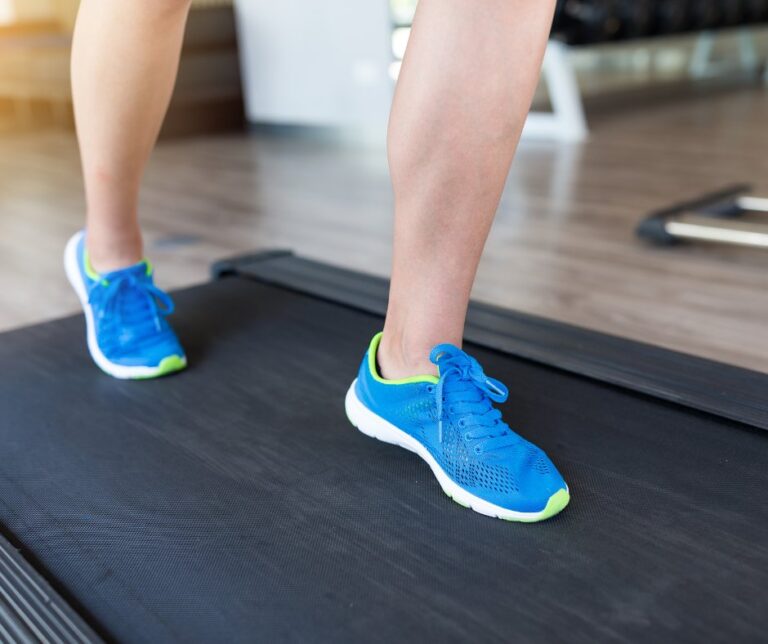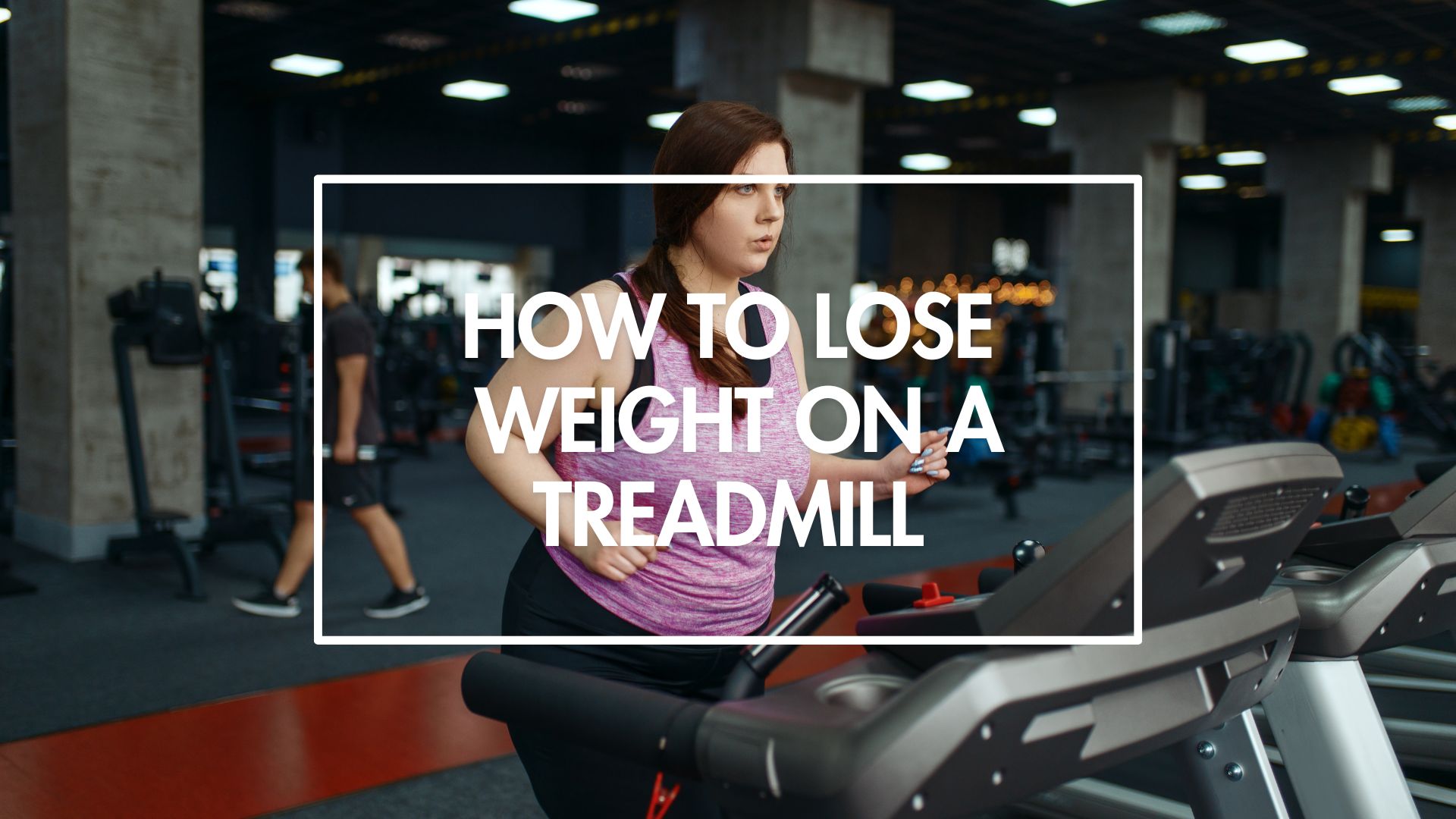Kicking off your weight loss journey needs the right equipment and knowledge to show significant progress. One of the most popular weight loss equipment is the treadmill. Whether you have a treadmill at home or at the gym, understanding how to use a treadmill effectively can transform your body and improve your health.
Our treadmill experts will guide you through various workouts and give you tips for losing those extra pounds.
1. Incline Walk

Incline walking on a treadmill is a simple yet powerful way to enhance your weight loss efforts. By walking uphill, you increase the intensity of your workout without running, making it a great option if you’re just starting out or prefer a lower-impact exercise. Set the incline to a level that challenges you but is still manageable.
You should maintain your walk for the duration of your workout without holding onto the handrails, as this can reduce the effectiveness of the exercise. Aim for an incline that makes you feel like you’re walking up a hill, and adjust as needed.
Boosting Caloric Burn
The higher the incline, the more calories you’ll burn. Incline walking targets your glutes, hamstrings, and calves more intensely than walking on a flat surface. It also increases your heart rate, leading to higher caloric expenditure. Try incorporating intervals by alternating between a high incline and a lower incline to keep your body guessing and to burn even more calories.
Combating Workout Plateaus
Incline walking is also an excellent way to prevent or breakthrough weight loss plateaus. As your body adapts to your workout routine, you may find that you’re not losing weight as quickly as before. Increasing the incline can introduce a new challenge to your workouts, encouraging your body to continue adapting and burning fat.
2. Sprint Intervals
Sprint intervals, or high-intensity interval training (HIIT) on a treadmill, are a time-efficient way to accelerate fat loss. These short bursts of intense exercise followed by periods of rest or low-intensity exercise can significantly increase calorie burn during and after your workout, thanks to the afterburn effect.
To perform sprint intervals, warm up at a comfortable pace, then alternate between sprinting for 30 seconds and walking or jogging for 1-2 minutes. Repeat this cycle for 20-30 minutes. As your fitness improves, you can increase the sprint duration and decrease the rest period.

Boosting Metabolism
Sprint intervals burn many calories during the workout and elevate your metabolism for hours afterwards. You’ll continue to burn calories at a higher rate even when you’re not exercising, making sprint intervals incredibly effective for weight loss.
Customizing Your Intervals
The beauty of sprint intervals is that they can be customized to your fitness level. If you’re new to exercise, start with shorter sprints and longer recovery periods. As you become more comfortable, you can gradually increase the intensity and duration of your sprints. Always listen to your body and don’t push yourself to the point of injury.
3. Walk The Hills
Walking the hills on a treadmill simulates the experience of hiking outdoors, providing a varied and challenging workout that can help you burn more calories. By adjusting the incline to different levels throughout your workout, you can target different muscle groups and keep your body engaged.
Start with a moderate incline and gradually increase it as if you were walking up a series of hills. You can create your own hill-walking workout by playing with incline levels or use pre-programmed hill workouts that many treadmills offer.

Building Leg Strength
Hillwalking is excellent for weight loss and building leg strength. As you walk uphill, your leg muscles have to work harder to propel you forward, leading to increased muscle tone and strength over time. Stronger muscles also mean a higher resting metabolic rate, as muscle tissue burns more calories than fat, even at rest.
Enhancing Endurance
Regularly walking the hills can also improve your cardiovascular endurance. As you tackle the inclines, your heart and lungs must work harder to supply oxygen to your muscles. Over time, this can improve cardiovascular health and stamina, allowing you to exercise for more extended periods and at higher intensities.
4. Low-Intensity Steady State (LISS)
Low-intensity steady State (LISS) is a form of cardiovascular exercise in which you maintain a steady, manageable pace for an extended period. This type of workout is excellent for beginners or those who prefer a less intense exercise session. On a treadmill, this could mean walking or jogging at a pace that allows you to carry a conversation comfortably.
LISS workouts typically last between 30 to 60 minutes, allowing you to burn calories consistently over a longer period. This exercise is less taxing on the body, making it suitable for frequent sessions and reducing the risk of injury.

Promoting Fat Oxidation
LISS promotes fat oxidation, which is the body’s ability to use fat as fuel. When you exercise at a lower intensity, your body is more likely to draw energy from fat stores rather than carbohydrates. Low-intensity steady-state exercise can benefit weight loss, as it helps you burn fat specifically.
Encouraging Consistency
Since LISS is less strenuous, sticking to a regular workout routine is often easier. You’re less likely to feel overly fatigued or sore after a LISS session, which can motivate you to stay consistent with your exercise plan. Consistency is crucial for weight loss, as regular workouts’ cumulative effect leads to significant results.
5. High-Intensity Interval Training (HIIT)
High-intensity interval Training (HIIT) is a workout style alternating between short bursts of intense activity and fixed periods of less intense activity or complete rest. Compared to steady-state cardio, HIIT on a treadmill can be an extremely effective way to maximize calorie burn in a shorter period.
A typical HIIT treadmill workout might involve 30 seconds of sprinting followed by 1 minute of walking or light jogging. This pattern is repeated for 15-20 minutes. The intense intervals raise your heart rate quickly, leading to more calories burned during the workout and an increased metabolic rate for hours afterwards.

Enhancing Cardiovascular Fitness
HIIT has been shown to improve cardiovascular fitness rapidly. The intense nature of the intervals pushes your heart and lungs to adapt to strenuous conditions, strengthening your cardiovascular system. Over time, HIIT can lead to improvements in heart health and endurance, allowing you to exercise more efficiently.
Adapting to Your Fitness Level
One of the advantages of HIIT is that it’s adaptable to any fitness level. You can adjust the intensity, duration, and frequency of the intervals to suit your current fitness and gradually increase the challenge as you become stronger. Remember to include a warm-up and cool-down to prevent injuries and aid recovery.
6. Incline Jog
Incline jogging is a step up from incline walking and is an excellent way to increase the intensity of your treadmill workout. Jogging at an incline creates a more challenging cardiovascular workout that burns more calories and builds muscle strength.
To incorporate incline jogging into your routine, start with a moderate incline that feels challenging but sustainable for a jog. You can jog at this incline for the entirety of your workout or mix it up with flat jogging intervals to add variety.

Engaging More Muscle Groups
Jogging on an incline engages your glutes, hamstrings, quads, and core more than running on a flat surface to improve muscle tone, strength, and overall fitness. Additionally, the increased effort required to jog uphill can lead to a higher caloric burn compared to flat-surface jogging.
Improving Running Form and Endurance
Incline jogging can also help improve your running form and endurance. The incline forces you to maintain proper posture and engage your core, which can translate to better form when running on flat surfaces. Additionally, the increased difficulty of jogging on an incline can build stamina and endurance, benefiting your overall running performance.
Is a Treadmill Good For Losing Belly Fat?
The treadmill is an excellent machine for losing belly fat as it provides a straightforward way to perform cardiovascular exercise, which is essential for burning fat, including visceral fat that accumulates around your midsection. However, reducing belly fat requires a holistic approach with a balanced diet and strength training.
To target belly fat, incorporate a mix of different treadmill workouts to increase your heart rate and maximize calorie burn. Also, pay attention to your diet, ensuring you’re consuming fewer calories than you’re burning to create a calorie deficit necessary for fat loss. Consistent treadmill workouts will, over time, contribute to an overall reduction in body fat, including belly fat.
Don’t forget to regular check and lubricate your treadmill for smooth performance.
How much should I workout on a treadmill to lose weight?
When it comes to losing weight on a treadmill, consistency and intensity are key. As a beginner, you should work out at least 150 minutes per week at a moderate intensity, which can be broken down into 30-minute sessions five days a week. If you’re aiming for more aggressive weight loss, increase this to 300 minutes per week.
The intensity of your workouts will also play a significant role. You don’t have to push yourself to the maximum every session. However, doing higher-intensity workouts will boost your calorie burn. Listen to your body and gradually increase your workout duration and intensity to avoid injury and burnout.
Rest days are really important for muscles recovery. Your body needs time to repair and adapt to the increased activity levels. Over training can lead to injuries and may hinder your weight loss efforts by causing exhaustion or muscle loss.
How Much Weight Can I Lose on a Treadmill at Home?
The amount of weight you can lose on a treadmill at home depends on various factors, including your starting weight, diet, exercise intensity, and consistency. A safe and sustainable rate of weight loss is 1-2 pounds per week. To lose one pound of fat, you must create a calorie deficit of approximately 3,500 calories.
Depending on your weight and workout intensity, using a treadmill can help you burn 200 to 1,000 calories per hour. For example, a 155-pound person can burn around 335 calories by walking briskly for an hour. Combining treadmill workouts with a calorie-controlled diet can create a calorie deficit and help you lose weight effectively.
Remember, the key is to maintain a consistent workout routine and follow a balanced diet. It’s also important to track your progress, adjust your workouts as needed, and be patient. Weight loss takes time, and focusing on long-term lifestyle changes is more important than quick fixes.



